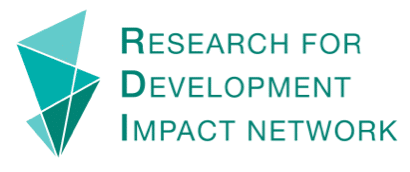Working with a variety of stakeholders means that it is an imperative that all outputs are designed in a way that is accessible to all. Whether you are working with people with disabilities, working with local communities, diaspora, or disseminating your work to the broader public, research outputs need to be in form so that everyone can use the information.
This could be in the form of translating reports, using visual aids, simplifying the language, and/or creating videos. Increasingly, research outputs are now digital and online, so here are a few resources to highlight how to create accessible outputs online.
These tips and resources can be used by yourself, or can be used to ask the right questions when selecting designers:
- Accessible vs Inclusion
Accessibility is focused on outcomes – can a specific group of people use this product? For example; Can people with disabilities read this document? Can people in-region access this report via the internet? Inclusion is a process of designing a product or communication piece for a variety of people at the beginning of the planning process. It is the concept that when one designs for the outer margins (working from the outside-in), then a diverse range of people will be accommodated. Approaching your research outputs with an inclusive mindset can ensure that people with disabilities (and others) can use your communications. - Accessibility Specialist
As mentioned, we are increasingly becoming more and more digital. The COVID-19 pandemic also saw an increase of digital engagement with much more diverse range of people. While we all have the responsibility to understand and implement basic accommodations and accessibility etiquette (online and offline), there are times to call in an Accessibility Specialist – whether that is to design an accessible PDF document, an accessible website, or ensuring that face-to-face events are appropriately welcoming. Hiring a specialist can be daunting when you may not be exactly sure of what to look for – so before meeting with a specialist, make a list of people that you’d like included to ensure that the potential specialist can answer your questions. Better yet, ensure that your project has team members from a diverse range of lived experiences and the project is informed by inclusion from the start - General accessibility
Feel like you need to brush up on some skills to to create accessible Word documents, emails, or meetings? Then CBM Australia’s Disability Inclusive Development resource hub (DID4All) and Vision Australia are both great places to start. These resources are recognised internationally and include a gamut of accessibility accommodations and how to implement it. They also have a few blog posts if you are wanting to know more!
Links:
- Accessible Design vs Inclusive Design (with Infographic) (5 min read, blog post)
- What to Look For When Hiring a Web Accessibility Specialist (5 min read, blog post)
- Research for All: Making Research Inclusive of People with Disabilities (120min read, PDF) – Section 4 addresses accessible research outputs and has a range of case studies to demonstrate inclusion in action
- Tools and Resources from Vision Australia (Further resources and guides)
- Disability Inclusive Development resource hub (DID4All) from CBM Australia (Further resources and guides)
Photo by Daniel Thomas on Unsplash



